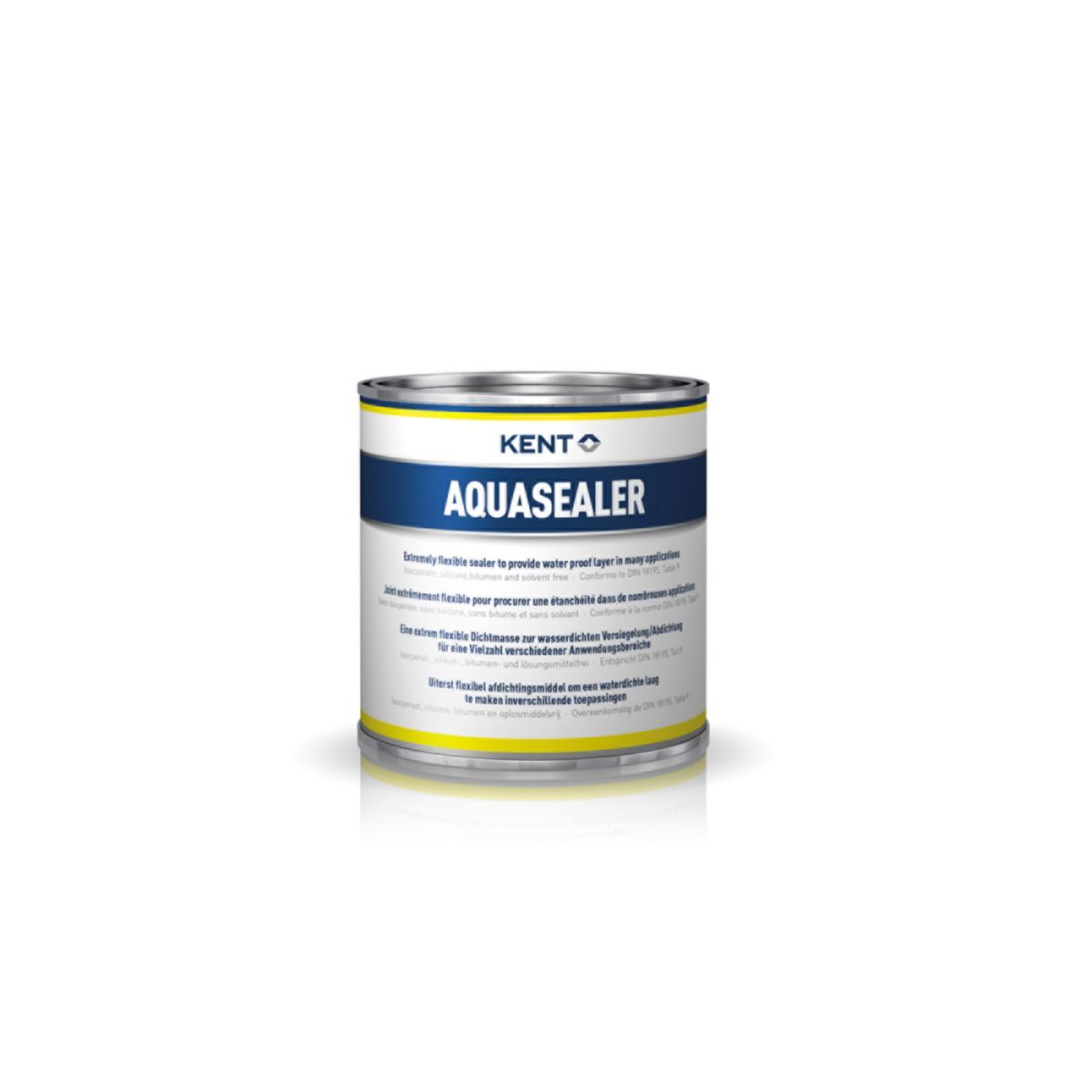
Aquasealer
Extremely flexible sealer to provide waterproof layer in many applications.
Features & Benefits
- Low viscosity and highly elastic sealant - to protect against penetrating moisture in soils and pressing water
- No isocyanates, silicone, bitumen and solvents - less hazardous for the user and the environment
- Primer-less - outstanding adhesion to virtually all surfaces
- Easy application - can be applied to damp surfaces without loss of adhesion
- Excellent UV and weather - remains permanently flexible
Application
Aquasealer acts as a water proofing layer on vertical and horizontal surfaces such as basement walls, concrete foundations, concrete roofs and sealing at corner floor wall connections.
Aquasealer is also suitable for the repair of leaking gutters, roof domes and eaves and as a water proofing membrane under, e.g. concrete paving tiles on roofs.
Aquasealer can be used for:
Sealing ofAquasealer acts as a waterproofing layer on vertical and horizontal surfaces such as basement walls, concrete foundations, concrete roofs and sealing at corner floor wall connections.
Aquasealer is also suitable for the repair of leaking gutters, roof domes and eaves and as a waterproofing membrane under, e.g. concrete paving tiles on roofs.
Aquasealer can be used for:
Sealing of (underground) concrete foundations, basement walls and masonry.
Repairs to roofs around chimneys, roof domes, eaves and gutter sealing.
Vapour control layer below screed floors, sealing (with glass fibre reinforcement) of corners, connections between floor and wall joints.
Waterproof layer of concrete roof tiles, wooden terrace ramps and concrete terrace tiles.
Repair of old sanded or mineral coated bituminous roof felts.
Aquasealer bonds well to most construction materials without the use of a primer and gives good adhesion to concrete, stone, masonry, polystyrene foam, wood, steel, glass, aluminium, sanded roofing and polyester.
Instructions
1. The substrate should be solid and free from loose materials, dust and grease.
2. For best results, apply Aqua Sealer to a dry or moist surface. Remove any water or water film.
3. If applied from the 14kg bucket, cut open the inner packaging. Pour Aqua Sealer into the bucket and dispose of the inner packaging.
4. Apply the first layer of Aqua Sealer using a short-haired velvet roller, spatula or brush, directly from the bucket.
5. After 4 hours (at 20°C), the second layer can be applied. The consumption is 2-3 kg per m² for 2 layers of 1,5 mm thickness each.
6. Outside basement walls can be filled off with sand or soil within 24 hours. In inner corners, where an extremely high load is expected, glass fibre reinforcement sheeting should be applied in the first layer of Aqua Sealer.
7. If Aqua Sealer is to be used as a fixation/anti-slip membrane, (for concrete paving tiles on concrete roofs), a thinner layer (0.4 kg m²) is sufficient.
8. When Aqua Sealer is used as a vapour control membrane layer under screed floors, under tiles and finishing layers of balconies, terraces and industrial floors, the second layer of Aqua Sealer should be sanded with quartz sand (grain size 0.1 - 0.5
about 2 kg m²).
9. Remove excess sand after 24 hours with a soft brush and then the floor can be finished.
Cleaning: fresh uncured sealant can be removed with a clean cloth soaked with thinner / Soft Surface Cleaner. Cured material can only be removed mechanically.
NB: Aqua Sealer should not to be applied to new / naked bitumen or fresh concrete. Discoloration may occur on bitumen but this does not affect the technical properties in any way. Not suitable for application in (fish) ponds and drinking water reservoirs.

